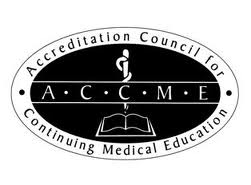 The national Accreditation Council for Continuing Medical Education (ACCME®) awarded the Wright State University Boonshoft School of Medicine Continuing Medical Education (CME) Accreditation with Commendation at its July meeting.
The national Accreditation Council for Continuing Medical Education (ACCME®) awarded the Wright State University Boonshoft School of Medicine Continuing Medical Education (CME) Accreditation with Commendation at its July meeting.
Accreditation with Commendation is awarded nationally to only a few CME providers that demonstrate compliance in 22 criteria. The ACCME commended the medical school for meeting the accreditation requirements and for demonstrating that it is a learning organization and a change agent for the physicians served in the Miami Valley.
This is the first time Wright State has received Accreditation with Commendation. “It’s a real marker for excellence for the Boonshoft School of Medicine,” said Albert F. Painter, Jr., Psy.D., assistant dean of faculty affairs. “We have created a continuum of medical education that starts in medical school, continues in residency and is offered in medical practice with continuing education. The Accreditation with Commendation shows that the Boonshoft School of Medicine is a national leader in physician education.”
Physicians and other health care providers rely on accredited CME to help them improve their practice and care of patients. Accredited CME covers a range of topics related to health care improvement, including medical errors prevention, chronic disease treatment, cancer care, women’s health, children’s health, veterans’ care, physician-family communication skills and prescription drug abuse prevention.
In 2012, the medical school provided 115 CME courses totaling 398 hours of instruction, 45 regularly scheduled CME series (weekly/monthly) totaling 833.25 hours of instruction and three Internet CME enduring materials.
Karen Bertke, CME program administrator for the medical school, said that approximately 21 percent of ACCME-accredited providers nationwide earned Accreditation with Commendation. “These CME programs show evidence of complying with seven additional criteria that focus on the ideas of collaboration, synergies and cooperation with others,” she said. “We could not achieve this distinction without our partners in the community and in hospitals.”
Partners include Premier Health’s Miami Valley Hospital, Good Samaritan Hospital, Atrium Medical Center and Upper Valley Medical Center, Dayton Children’s, the VA Medical Center, Springfield Regional Cancer Center, Community Blood Center/Community Tissue Services and the Boonshoft School of Medicine clinical departments.
In 2011, the medical school partnered with Premier Health to help streamline continuing medical education in Dayton. “We share many of the same physicians with the hospitals. In the past, some educational efforts were duplicated because we have similar needs but did not have the means to identify them,” Bertke said. “We now can simplify those efforts to include not only hospital requirements but also medical school and residency educational requirements.”
The medical school’s CME program works closely with other Ohio medical school CME programs through a consortium, CPD Ohio. In January 2012, the medical school received the Alliance for Continuing Education in the Health Professions Award for Innovation in Continuing Professional Development.
One of the goals of the medical school’s CME program, which follows an integrated model of continuing professional development, includes developing an institutional set of patient safety and quality improvement objectives to better measure overall outcomes.
“In the future, our planned overall goal is to identify specific initiatives related to patient safety and quality improvement so that all of our partners will develop activities to affect and measure outcomes in the Miami Valley,” Painter said.

 Wright State University and Premier Health more closely align operations, creating a transformational partnership
Wright State University and Premier Health more closely align operations, creating a transformational partnership  Bottom Line, Wright State partnership aims to increase access to college
Bottom Line, Wright State partnership aims to increase access to college  Wright State’s nursing program celebrates 50th anniversary
Wright State’s nursing program celebrates 50th anniversary  Wright State celebrates Student Success Champions
Wright State celebrates Student Success Champions  Wright State golf team captures 2024 Horizon League team title, Flynn individual champion
Wright State golf team captures 2024 Horizon League team title, Flynn individual champion 